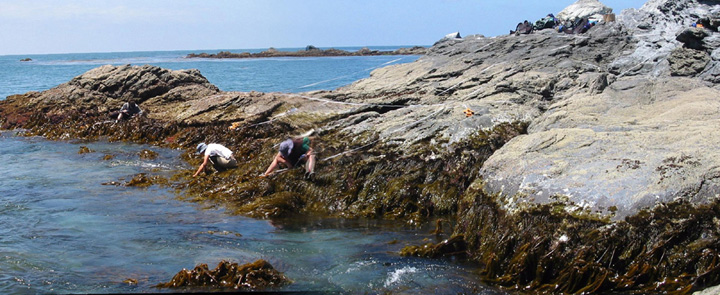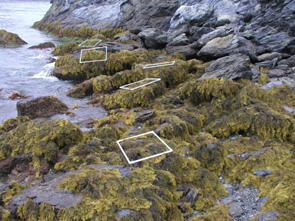Little Harbor | MARINe
Little Harbor
Click here for Long-Term trends
Click here for Biodiversity Survey findings
Little Harbor is located in the Southern Channel Islands, on the southwest side of Santa Catalina Island, California. This site is located in an Area of Special Biological Significance (Subarea Two, North End of Little Harbor to Ben Weston Point ASBS). This site is situated between the Little Harbor campground and Shark Cove surfing beach. This site receives moderately low visitation due to its remote location and steep bluffs; however, campers and boaters explore the area. This moderately sloping site consists of moderately uneven terrain, containing crevices and folds.

Little Harbor is dominated by a mixture of consolidated metamorphic bedrock and boulder fields, and the area surrounding the site is comprised of a mixture of consolidated bedrock, boulder fields, and sandy beach. The primary coastal orientation of this site is south/southwest.
Long-Term Monitoring Surveys at Little Harbor were established in 1995, and are done by Channel Islands Research Program.. Long-Term MARINe surveys currently target the following species and/or areas: Chthamalus/Balanus (Acorn Barnacles), Mytilus (California Mussel), Silvetia (Golden Rockweed), Rock (Above Barnacles), and Pisaster (Ochre Star). This site includes two subareas on a headland between two coves (Little Harbor and Shark Cove), with the most sheltered subarea on the north side of Shark Cove targeting Silvetia only. Click here to view Long-Term trends at this site.

Biodiversity Surveys were done by University of California Santa Cruz in 2002, 2007, 2018, and 2020. The Biodiversity Survey grid encompasses two sections that are approximately 10 meters (along shore) x 10 meters (seaward), and 12 meters (along shore) x 10 meters (seaward). Click here to view Biodiversity Survey findings at this site.
For more information about Little Harbor, please contact Steven Lee (steve@sonomaecologycenter.org) and Jack Engle (jackengle4@gmail.com).


